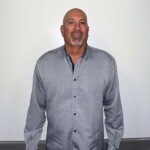Disappointment with Mitchell’s Response to the SCRS Blend Study
by Burl Richards, ABAT President
Ever since the Society of Collision Repair Specialists (SCRS) released the results of their blend study last year, I’ve been watching to see what the information providers (IPs) were going to do with the data that SCRS, AkzoNobel, Axalta, BASF, PPG and Sherwin-Williams gathered so meticulously and painstakingly. Overall, I’ve found their responses – or lack thereof – to be pretty telling, but we HAVE seen progress.
 They all started off by saying they would check out the study, and CCC/MOTOR was the first to determine that they would make an update to their system, which we saw back in October when the IP released a new “edit blend rules” functionality which calls for an on-the-spot evaluation that allows users to input a default value for two-stage and three-stage blends, or it gives users the option to have the system prompt them for the blend time specific to that repair.
They all started off by saying they would check out the study, and CCC/MOTOR was the first to determine that they would make an update to their system, which we saw back in October when the IP released a new “edit blend rules” functionality which calls for an on-the-spot evaluation that allows users to input a default value for two-stage and three-stage blends, or it gives users the option to have the system prompt them for the blend time specific to that repair.
Then, Audatex promised that they’ll be making a change to their system that will allow shops to indicate their own blend refinish percentage.
But what about Mitchell? Well, based on the latest updates from SCRS, it seems like Mitchell disagrees with the results of the blend study, which just doesn’t make a lick of sense to me, so while I was in Las Vegas for SEMA 2023, I took advantage of my opportunity to corner some folks from Mitchell to find out what’s what.
AASP/NJ Collision Director Jerry McNee and I ran into John Strong and Jerry Gastineau from Mitchell, and we figured it was time to figure out why they haven’t made any changes yet. Now, y’all probably know I’m pretty straightforward about things, so I came right out and told them that I’m pretty frustrated and don’t really understand why they haven’t addressed it.
These guys basically told me that Mitchell has done its own blend study and disagrees with what SCRS did! Now, I find that response to be even more irritating than the lack of a response because SCRS invited the IPs to participate in the study, but they declined the invite. OEMs participated. Paint companies participated. SCRS even enlisted the aid of a third-party auditor, DEKRA North America, to make sure the study was conducted in an unbiased manner. And in the past year, no one has come forward to demonstrate that it was conducted improperly in any way whatsoever. CCC and Audatex have acknowledged the need to make changes. But Mitchell disagrees?! I really don’t get how anyone could disagree with the SCRS blend study. And Mitchell won’t share their study, but they refuse to acknowledge the outdated times may not be accurate…despite the entire industry agreeing that 50 percent is completely unrealistic.
I think it was pretty obvious that Jerry and I were both extremely frustrated with the conversation as we pointed out that those labor times for blends haven’t changed in the past 30 years, but look at how far technology has come since then. We spray micas, pearls and some other pretty difficult colors nowadays. What about putting down the wet bed or a clear binder?
One of the guys from Mitchell actually mentioned that some items may entail additional labor during the blending process, that there are other processes and procedures that require additional time. So, I asked why they don’t put that in their definition because we all know insurance companies see everything in black and white, so in their minds, blends are adjusted at 50 percent. But if Mitchell just adds a statement that additional time might be required based on specific paint systems or colors, that at least opens the door for a conversation between shops and insurers that might allow us to negotiate a bit better.
It seemed like a lightbulb went off above one guy’s head. I don’t know how much authority either of my new buddies actually have. I’m curious to see if Mitchell will actually make any changes or if the IP is going to continue doing a disservice to the collision repair industry by ignoring the complexities that have arisen in the refinish and blending process over the past decades. One thing is certain: I’ll be following up with my Mitchell pals to find out what’s going on, and you can be sure I’ll update Texas Automotive readers with anything I learn. And I encourage y’all to reach out to Mitchell too.
Want more? Check out the December 2023 issue of Texas Automotive!
